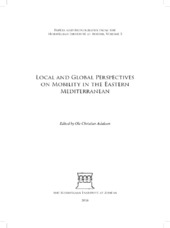| dc.contributor.author | Mühlenbock, Christian | |
| dc.date.accessioned | 2020-10-26T13:00:43Z | |
| dc.date.available | 2020-10-26T13:00:43Z | |
| dc.date.issued | 2016 | |
| dc.identifier.isbn | 978-960-85145-5-3 | |
| dc.identifier.issn | 2459-3230 | |
| dc.identifier.uri | https://hdl.handle.net/1956/24301 | |
| dc.description.abstract | The current article examines the role anthropomorphic representations in the Iron Age Mediterranean. Using two case studies, one from Cyprus and one from Sicily, it is noted that similar body gestures – the uplifted arms - on corplastic figurines was distributed over a vast areas of time and space. Originating in Cretan Bronze Age, the gesture regained its popularity several hundred years later in the Iron Age. The posture was eventually integrated in a multitude of ways in many local communities in the Cyprus, in the Aegean and in Italy and Sicily. While the local significance of the gesture no doubt was of commanding importance it is also argued that it also became popular because it was part of a Mediterranean body language with deep roots and a distant mythical past. The conclusion is therefore that the gesture with the uplifted arms was part of a well-known body language which was part of a cohesive force to bind different parts of the Mediterranean closer together. | nob |
| dc.language.iso | eng | nob |
| dc.publisher | The Norwegian Institute at Athens | nob |
| dc.relation.ispartofseries | Papers and Monographs from the Norwegian Institute at Athens. volume 5 | nob |
| dc.title | Adoring the past: anthropomorphic art and body language in the Iron Age Mediterranean | nob |
| dc.type | Chapter | nob |
